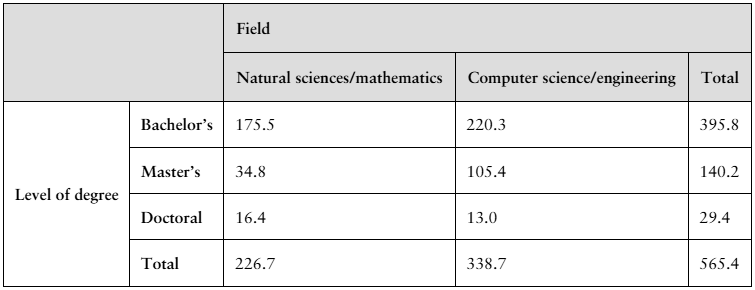88. Individual Stock Price An individual stock is selected at random from the portfolio represented by the box-and-whisker plot shown. Find the probability that the stock price is between \$21 and \$50.
Table of contents
- 1. Intro to Stats and Collecting Data1h 14m
- 2. Describing Data with Tables and Graphs1h 55m
- 3. Describing Data Numerically2h 5m
- 4. Probability2h 16m
- 5. Binomial Distribution & Discrete Random Variables3h 6m
- 6. Normal Distribution and Continuous Random Variables2h 11m
- 7. Sampling Distributions & Confidence Intervals: Mean3h 23m
- Sampling Distribution of the Sample Mean and Central Limit Theorem19m
- Distribution of Sample Mean - Excel23m
- Introduction to Confidence Intervals15m
- Confidence Intervals for Population Mean1h 18m
- Determining the Minimum Sample Size Required12m
- Finding Probabilities and T Critical Values - Excel28m
- Confidence Intervals for Population Means - Excel25m
- 8. Sampling Distributions & Confidence Intervals: Proportion1h 25m
- 9. Hypothesis Testing for One Sample3h 57m
- 10. Hypothesis Testing for Two Samples4h 50m
- Two Proportions1h 13m
- Two Proportions Hypothesis Test - Excel28m
- Two Means - Unknown, Unequal Variance1h 3m
- Two Means - Unknown Variances Hypothesis Test - Excel12m
- Two Means - Unknown, Equal Variance15m
- Two Means - Unknown, Equal Variances Hypothesis Test - Excel9m
- Two Means - Known Variance12m
- Two Means - Sigma Known Hypothesis Test - Excel21m
- Two Means - Matched Pairs (Dependent Samples)42m
- Matched Pairs Hypothesis Test - Excel12m
- 11. Correlation1h 24m
- 12. Regression1h 50m
- 13. Chi-Square Tests & Goodness of Fit2h 21m
- 14. ANOVA1h 57m
4. Probability
Basic Concepts of Probability
Problem 3.Q.2a
Textbook Question
The table shows the numbers (in thousands) of earned degrees by level in two different fields, conferred in the United States in a recent year. (Source: U.S. National Center for Education Statistics)
A person who earned a degree in the year is randomly selected. Find the probability that the degree earned by the person is a
a. bachelor's degree.

 Verified step by step guidance
Verified step by step guidance1
Step 1: Understand the problem. We are tasked with finding the probability that a randomly selected degree earned in the given year is a bachelor's degree. Probability is calculated as the ratio of the number of favorable outcomes to the total number of outcomes.
Step 2: Identify the total number of degrees earned. From the table, the total number of degrees earned across all levels and fields is 565.4 thousand.
Step 3: Identify the number of bachelor's degrees earned. From the table, the total number of bachelor's degrees earned across all fields is 395.8 thousand.
Step 4: Write the formula for probability. The probability of earning a bachelor's degree is given by:
Step 5: Simplify the fraction if needed to express the probability in its simplest form or as a decimal. This step involves performing the division or reducing the fraction.
 Verified video answer for a similar problem:
Verified video answer for a similar problem:This video solution was recommended by our tutors as helpful for the problem above
Video duration:
1mPlay a video:
Was this helpful?
Key Concepts
Here are the essential concepts you must grasp in order to answer the question correctly.
Probability
Probability is a measure of the likelihood that a particular event will occur, expressed as a number between 0 and 1. In this context, it refers to the chance of randomly selecting a person who earned a bachelor's degree from the total number of degrees conferred. The probability can be calculated by dividing the number of bachelor's degrees by the total number of degrees.
Recommended video:

Introduction to Probability
Total Degrees
The total degrees refer to the sum of all degrees conferred across different levels and fields. In the provided table, the total number of degrees is 565.4 thousand, which includes bachelor's, master's, and doctoral degrees in both natural sciences/mathematics and computer science/engineering. This total is essential for calculating probabilities.
Recommended video:

Critical Values: t-Distribution
Relative Frequency
Relative frequency is the ratio of the number of times an event occurs to the total number of trials or observations. In this case, it can be used to determine the proportion of bachelor's degrees relative to the total degrees. This concept helps in understanding how common a bachelor's degree is compared to other degree levels within the dataset.
Recommended video:
Guided course

Intro to Frequency Distributions

 5:37m
5:37mWatch next
Master Introduction to Probability with a bite sized video explanation from Patrick
Start learningRelated Videos
Related Practice
Textbook Question
39
views
